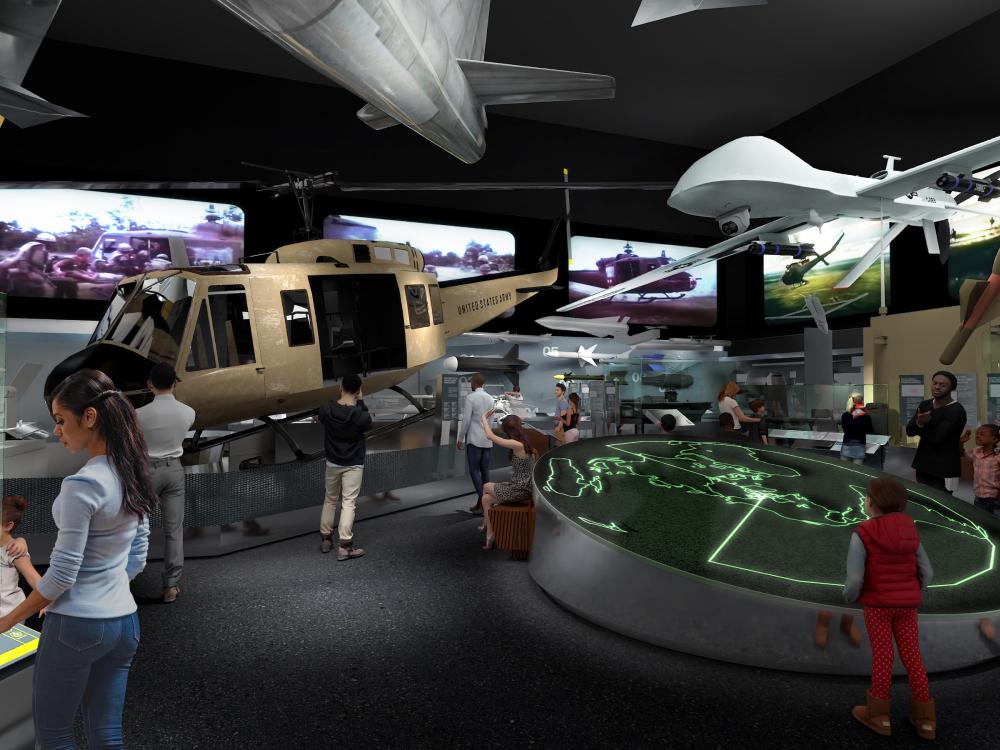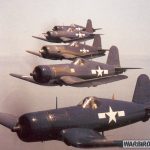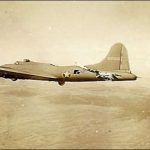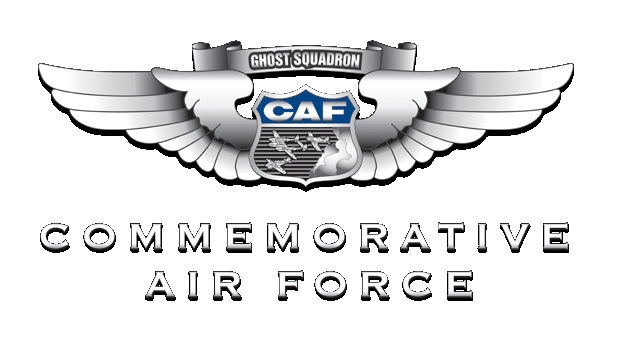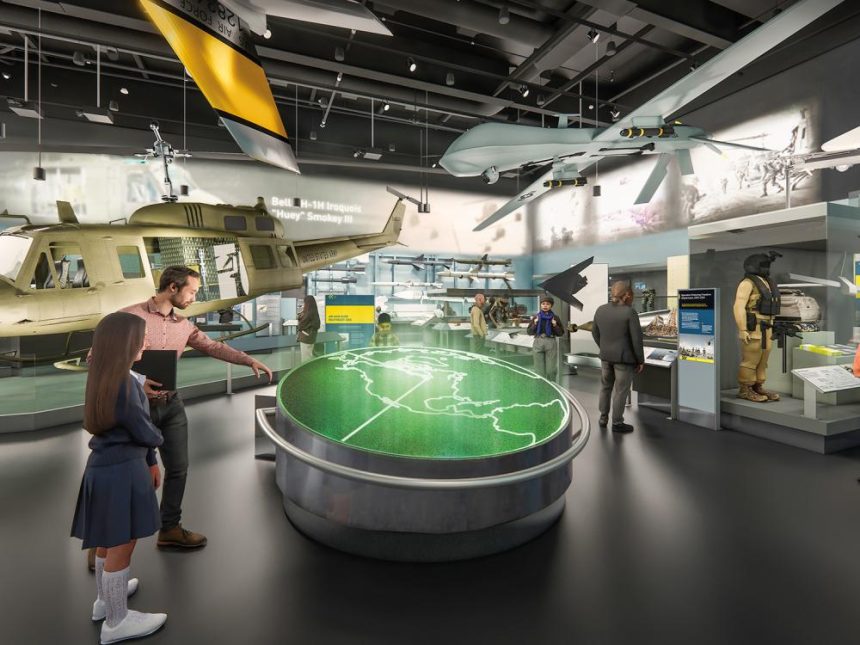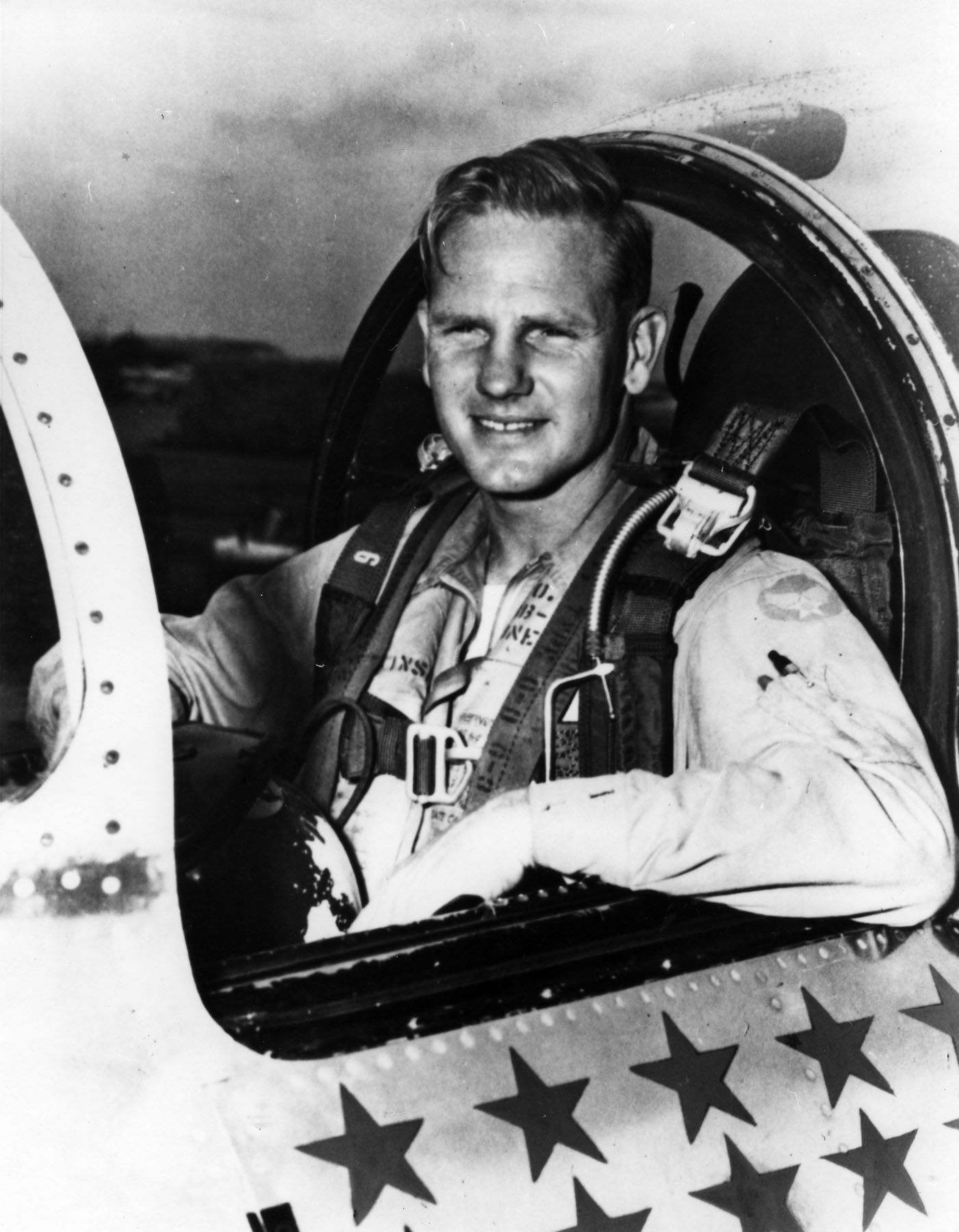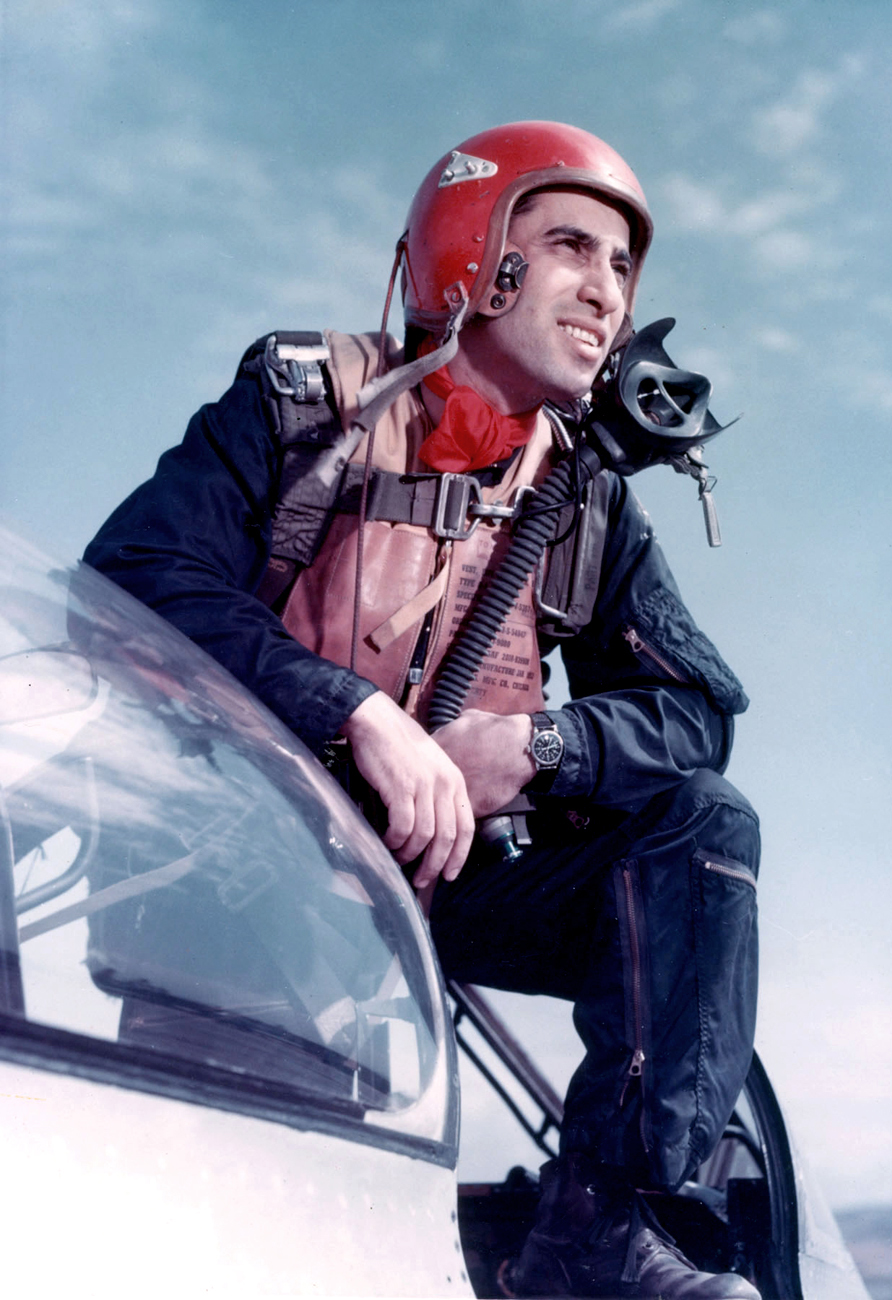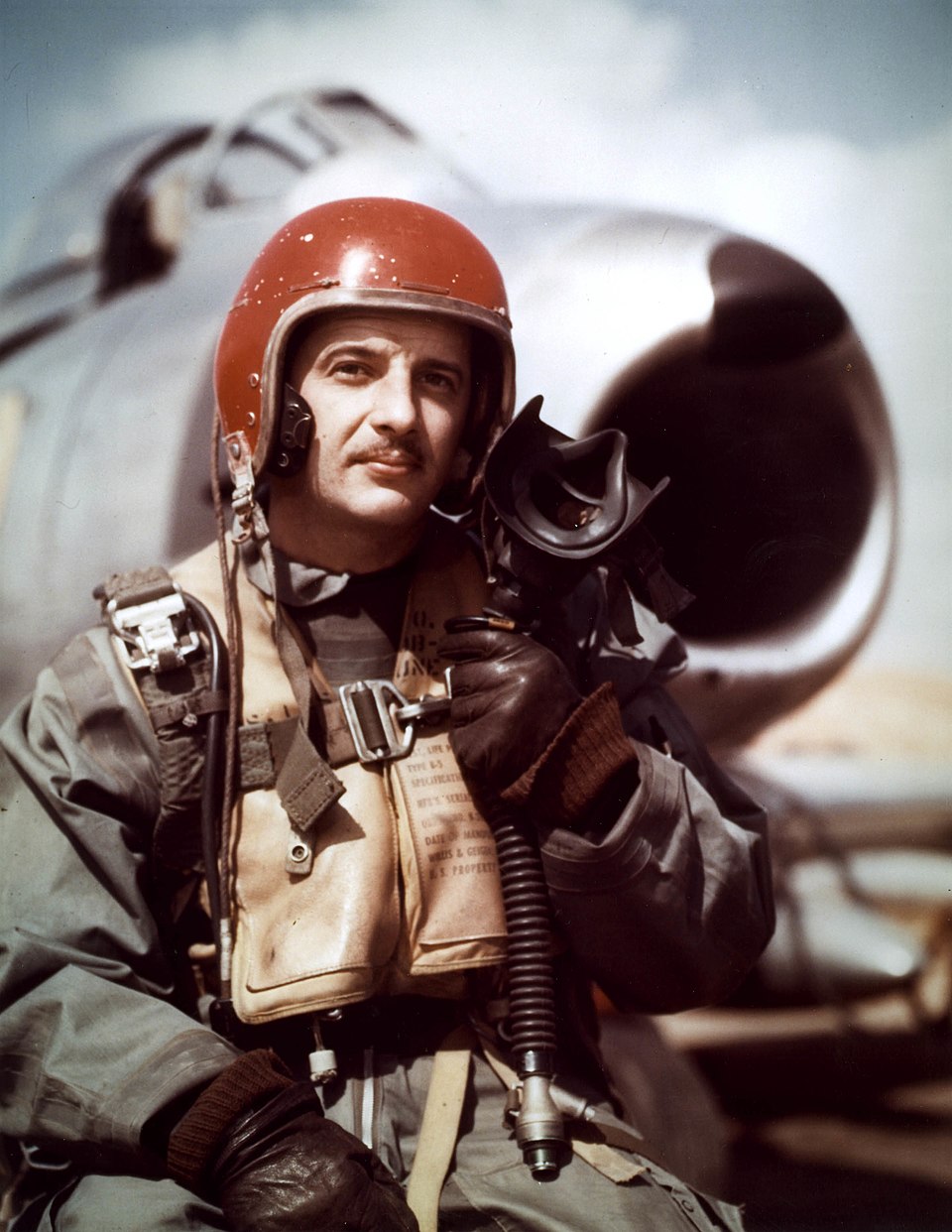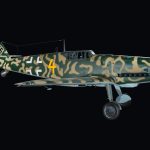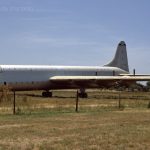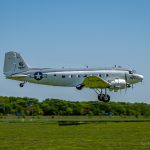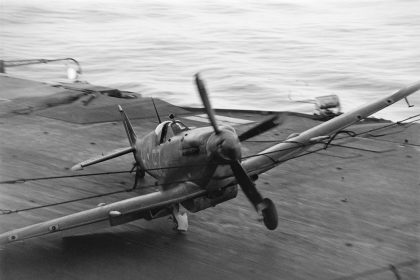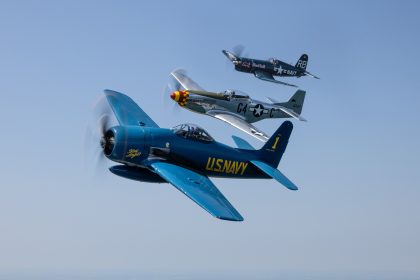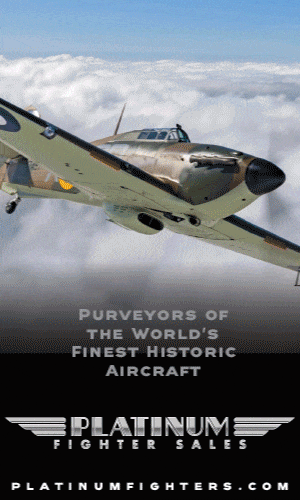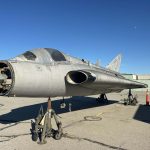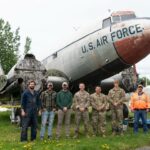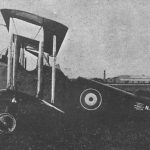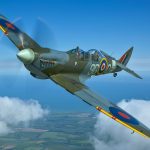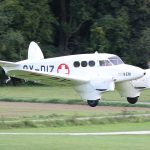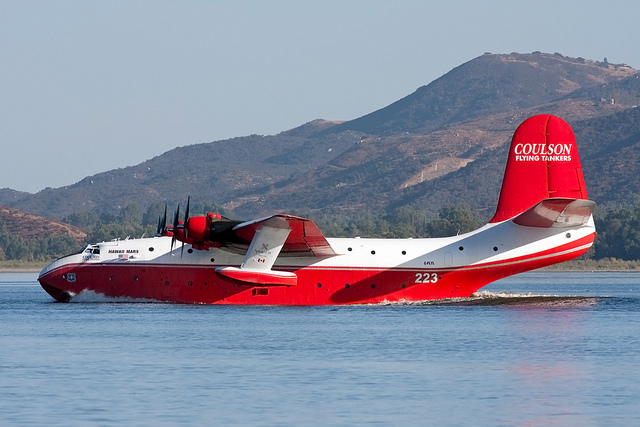With the renovation of the Smithsonian National Air and Space Museum‘s National Mall facility enters its final stages, the museum has been giving the public some previews of the upcoming galleries that will be opened in 2026, and one of these is the new exhibit of Modern Military Aviation, which seeks to showcase how aviation technologies were impacted by geopolitical events of the Cold War such as the Korean War, Vietnam War, and the Gulf War, and by events of the early 21st century such as the Global War on Terror, with a focus on the development of American military airpower.
The oldest aircraft that will be displayed in this new gallery is also one of the museum’s more recent acquisitions; a North American F-86F Sabre. This particular aircraft was originally constructed by North American Aviation in Inglewood, California as construction number 191-385, and delivered to the United States Air Force on April 22, 1953, as USAF serial number 52-4689.
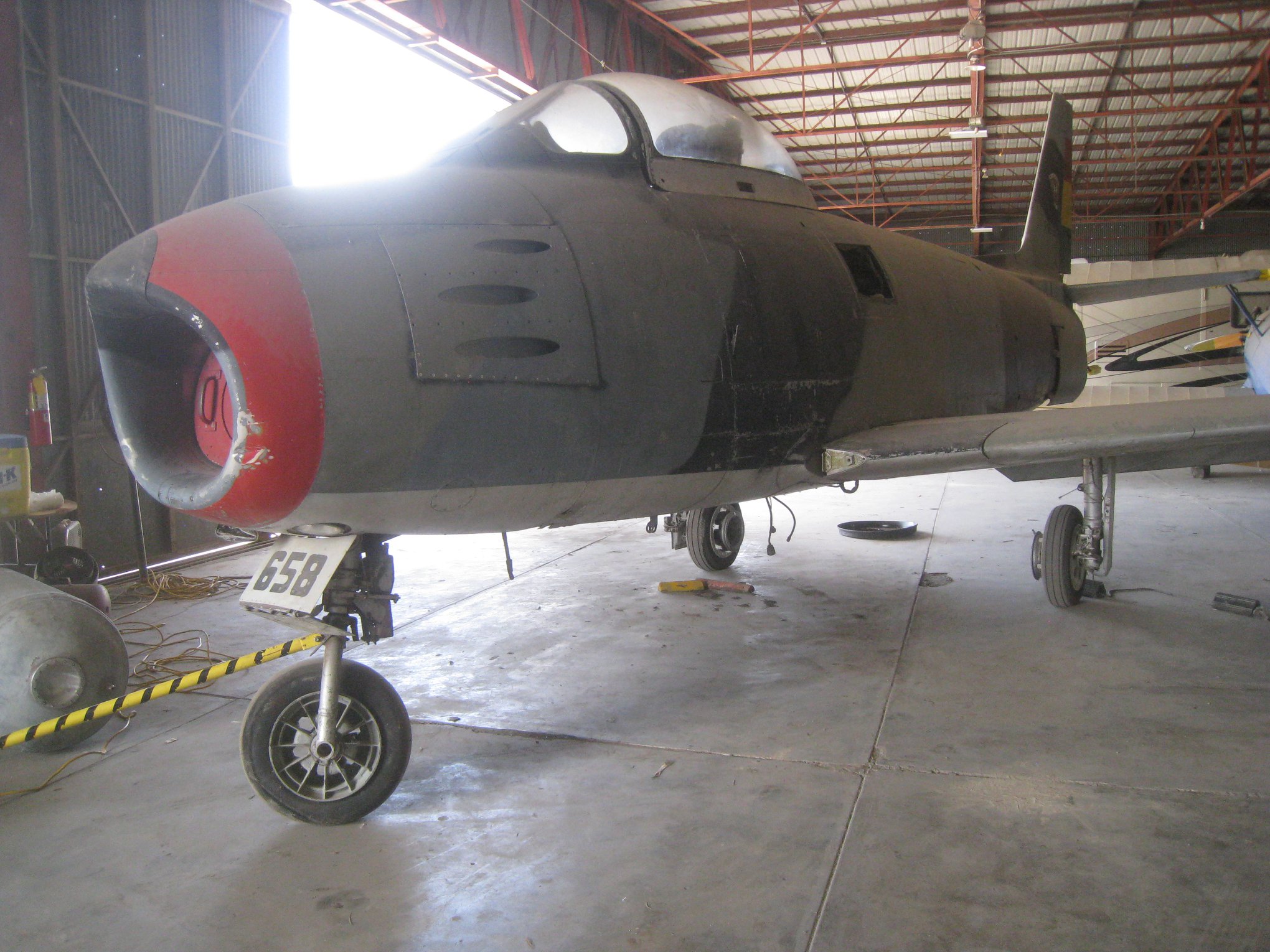
Immediately after entering service, 52-4689 was assigned to the 21st Fighter Bomber Wing (FBW) of Tactical Air Command (TAC) at George Air Force Base (now Southern California Logistics Airport) in Victorville, CA, and also flew with the 21st FBW on a deployment to Eielson AFB near Fairbanks, Alaska. In March 1954, the aircraft was transferred to the 612th Fighter Bomber Squadron (FBS), 401st Fighter-Bomber Group (FBG) at Alexandria AFB, Louisiana (later renamed to England Air Force Base, and now Alexandria International Airport). Nine months later, 52-4689 was transferred once more to the 452nd FS, 322nd Fighter-Day Group at Foster AFB in Texas (now Victoria Regional Airport).
In 1955, new fighters, such as the North American F-100 Super Sabre were being prepared to replace the F-86s, but the older Sabres would still be of use to America’s allies as a Cold War export fighter, and after being transferred to the Sacramento Air Material Area at McClellan AFB in July 1955, F-86F 52-4689 was stricken from the USAF inventory and transferred to the Venezuelan Air Force (Fuerza Aerea Venezolana; FAV) in October of 1955.
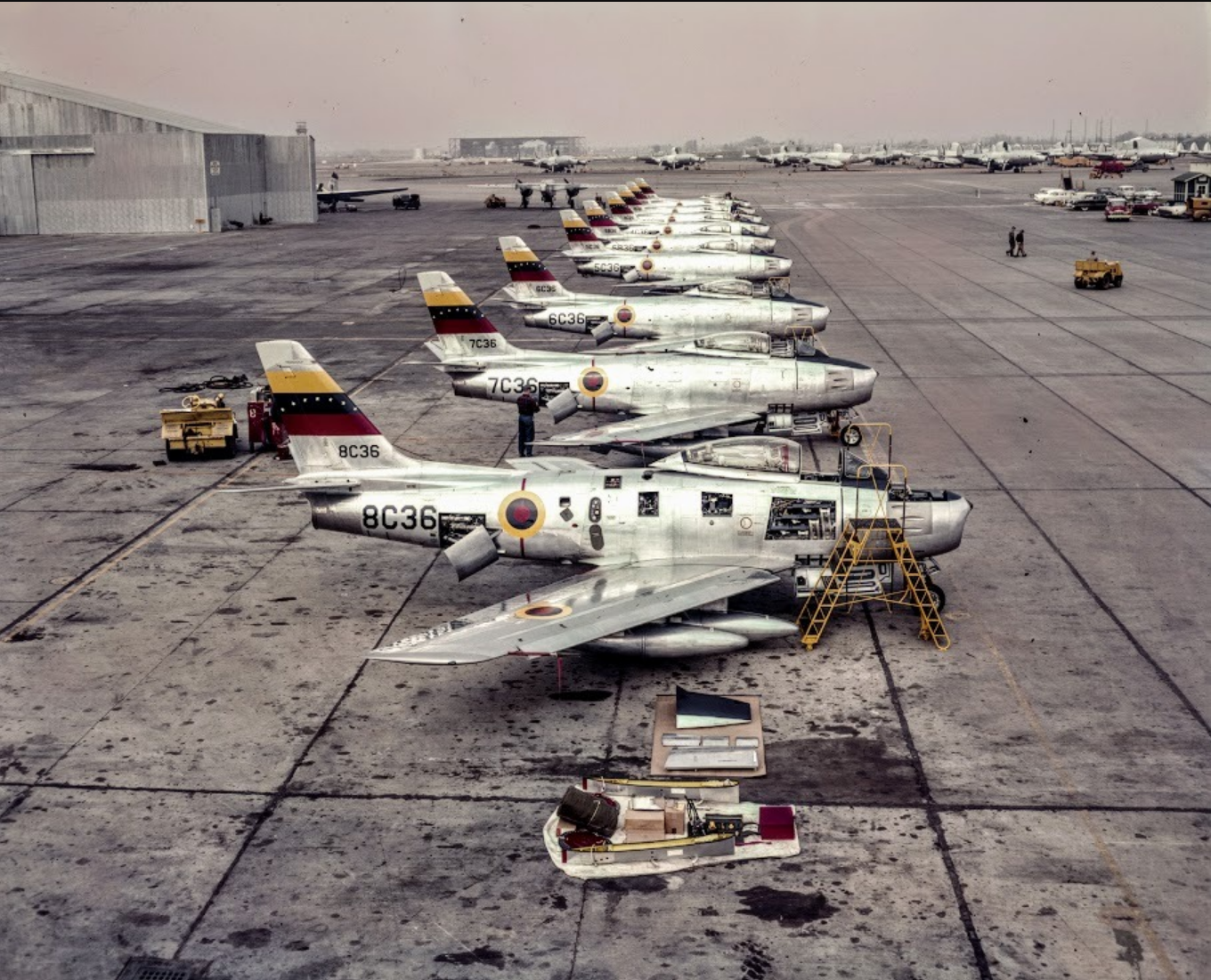
Virtually nothing has been written about the aircraft’s time in Venezuela, and no FAV serial numbers have yet been traced back to 52-4689. But in 1973, this Sabre was among nine ex-Venezuelan F-86Fs transferred to the Bolivian Air Force (Fuerza Aerea Boliviana; FAB), where it received the new serial number FAB-658, and was flown by the Grupo Aéreo de Caza 32 (Fighter Air Group 32) of the Third Air Brigade based out of Santa Cruz de la Sierra. This Sabre gained further notoriety for being one of the very last F-86 Sabres in active military service, as when the Bolivians retired their F-86s in 1994, they were the last country in the world to formally retire the venerable Sabre. At that time, the warbird industry in the United States had already seen several F-86s from other Latin American countries traded back to the United States, and collectors and pilots were eager to get their hands on the now surplus Sabres.
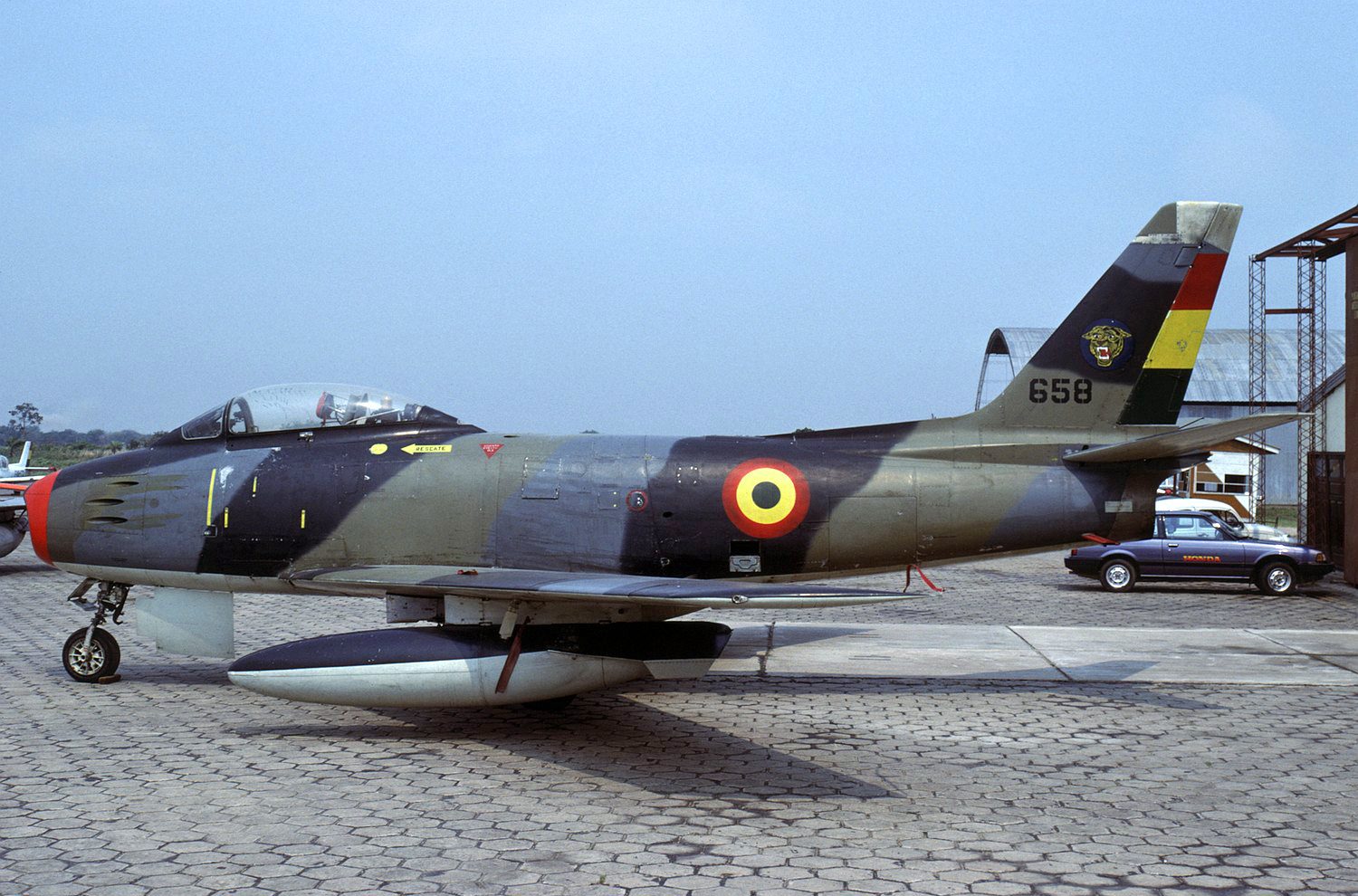
In March of 1994, Dixie Air Parts of San Antonio, Texas purchased FAB 658 and had it shipped to the Lone Star State. With the aircraft now back in the United States, 52-4689/FAB 658 was registered with the FAA as N8630, but was never flown, and kept in its FAB livery. For much of the past twenty years, the Sabre was displayed at the Vintage Flying Museum at Meacham International Airport, Fort Worth. Then, after the aircraft was listed for sale, it would disappear from Fort Worth and reappear in the fall of 2022 at the Smithsonian National Air and Space Museum’s Steven F. Udvar-Hazy Center in Chantilly, Virginia.

Although the museum already has an F-86A Sabre (serial number 48-260) on display in the Udvar-Hazy Center’s Korea and Vietnam Aviation Gallery, 52-4689 will be placed on display in the National Mall in downtown DC. The aircraft has had its FAB scheme removed, and will be displayed in the markings of an F-86F Sabre from the 334th Fighter-Interceptor Squadron, the “Fighting Eagles” who saw extensive combat against Mikoyan-Gurevich MiG-15s during the Korean War, and was the squadron in which some of the USAF’s most prominent fighter aces of the conflict were part of (Major Frederick “Boots” Blesse, Captain Manuel “Pete” Fernandez, and the first U.S. jet ace, Lebanese-American Major James Jabara).
During the work to repaint the Sabre, curators have found some unique field modifications made to the aircraft during its time in Latin America, namely several small vents added to an access panel to help cool the aircraft’s equipment in the high temperature and high humidity of South America. Although the aircraft may once again wear USAF colors, the details of its service in Venezuela and Bolivia are being recorded by museum curators.
Another aircraft set to be placed on display in the new gallery is the museum’s Bell UH-1H Iroquois Huey. Constructed by Bell Helicopter as construction number 5170, it was delivered to the US Army in October 1966 as serial number 65-10126, and by November 1966, it was sent to Vietnam and assigned to Company A of the 229th Aviation Battalion, 1st Cavalry Division. After ten months in service, 65-10126 was transferred to the Headquarters Company of the 11th Aviation Battalion, whose crew gave it the name Smokey III. In July 1968, Smokey III joined the 128th Assault Helicopter Company, and was used as a “smoke ship”, having been fitted with a device to spray oil into the exhaust system to produce enough smoke to obscure troops in friendly helicopters from heavy small-arms fire at “hot” landing zones (LZs). This was a very dangerous mission for the smoke ships, since the smoke was most effective when applied by helicopters flying low and slow while being exposed to heavy gunfire.
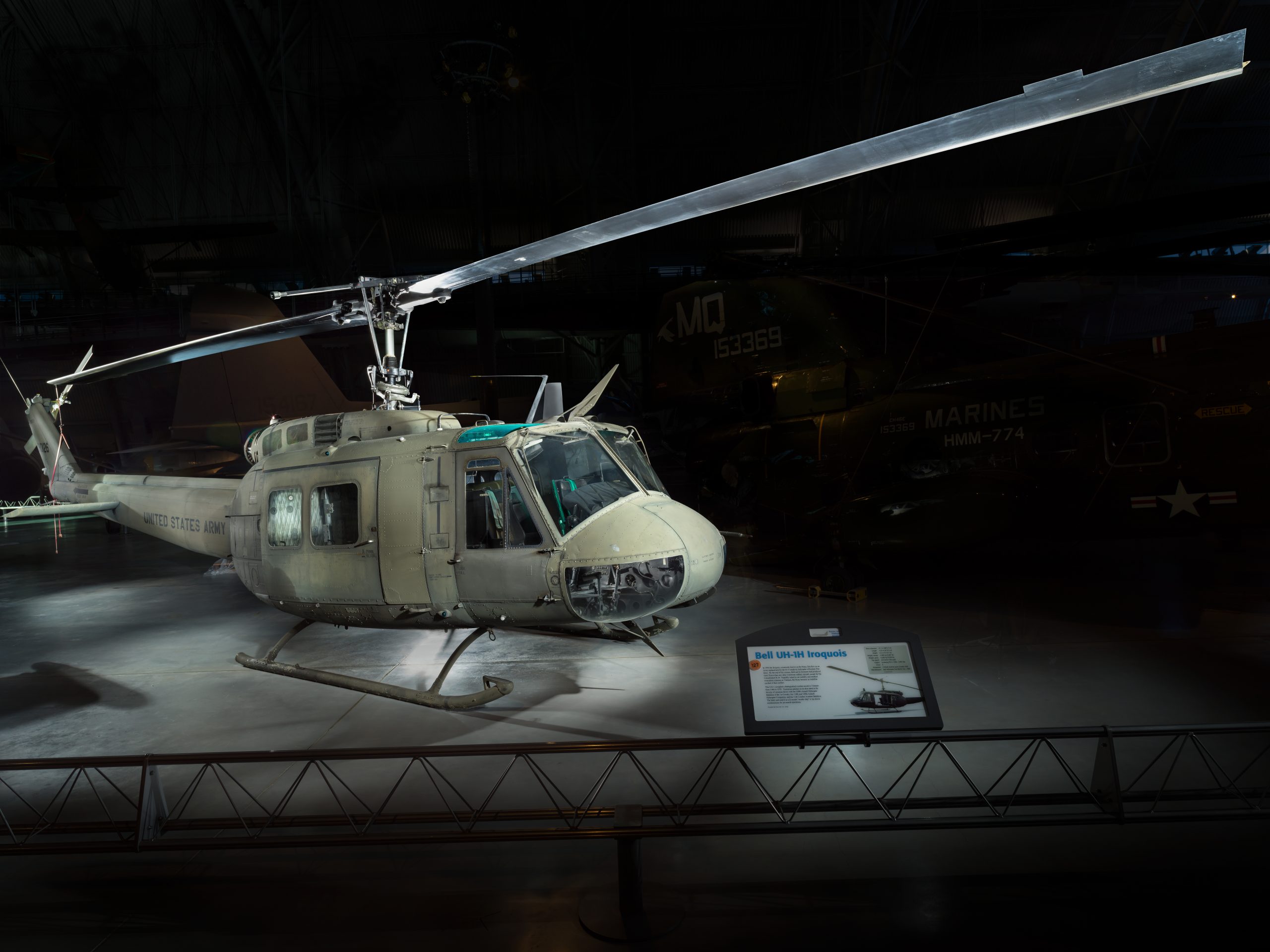
In April 1969, Smokey III was sent to the USA for repairs before returning to Vietnam in October 1969 for its fourth deployment, this time it was serving with the 118th Assault Helicopter Company until April 1970, when the aircraft suffered extensive damage in an accident that required it to be transferred stateside to Corpus Christi, Texas, for a total overhaul. With over 2,500 combat flying hours of four years of war in Vietnam, 65-10126 was reassigned to the Army National Guard in May 1971, and served in Kentucky and North Carolina. In March 1977, the aircraft was converted into a UH-1H variant, with an upgraded Lycoming T53 turboshaft engine, and the helicopter once known as Smokey III continued to serve in Air National Guard units until it was retired in February 1994.
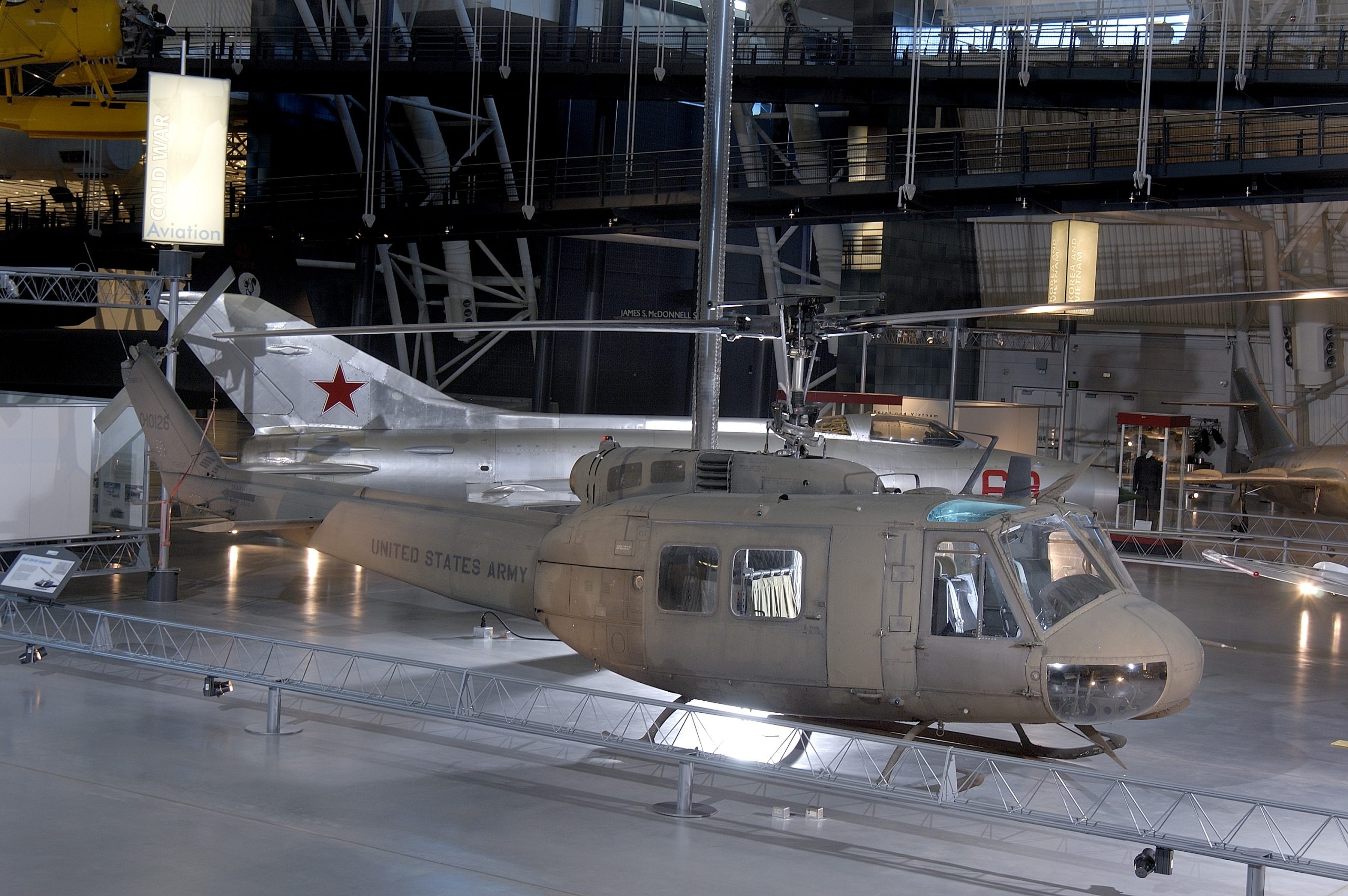
Originally stored at the US Army Aviation Museum at Fort Novosel (then called Fort Rucker), Alabama, it was sent to the National Air and Space Museum in 1995, being stored at the Paul E. Garber Preservation, Restoration and Storage Facility in Suitland, Maryland before going on display at the Steven F. Udvar-Hazy Center. Now, it is being looked over by the museum’s conservation staff in the Engen Restoration Hangar to assess its condition before it will be sent to the new gallery at the National Mall, alongside other items from the Vietnam War, from a prisoner uniform worn by General William “Bud” Breckner during his imprisonment at the Hỏa Lò prison (better known as the Hanoi Hilton), to a cavalry Stetson hat worn by Lieutenant Colonel Hugh Mills Jr., who flew Hughes OH-6 Cayuse and Bell AH-1 Cobra helicopters during the Vietnam War.
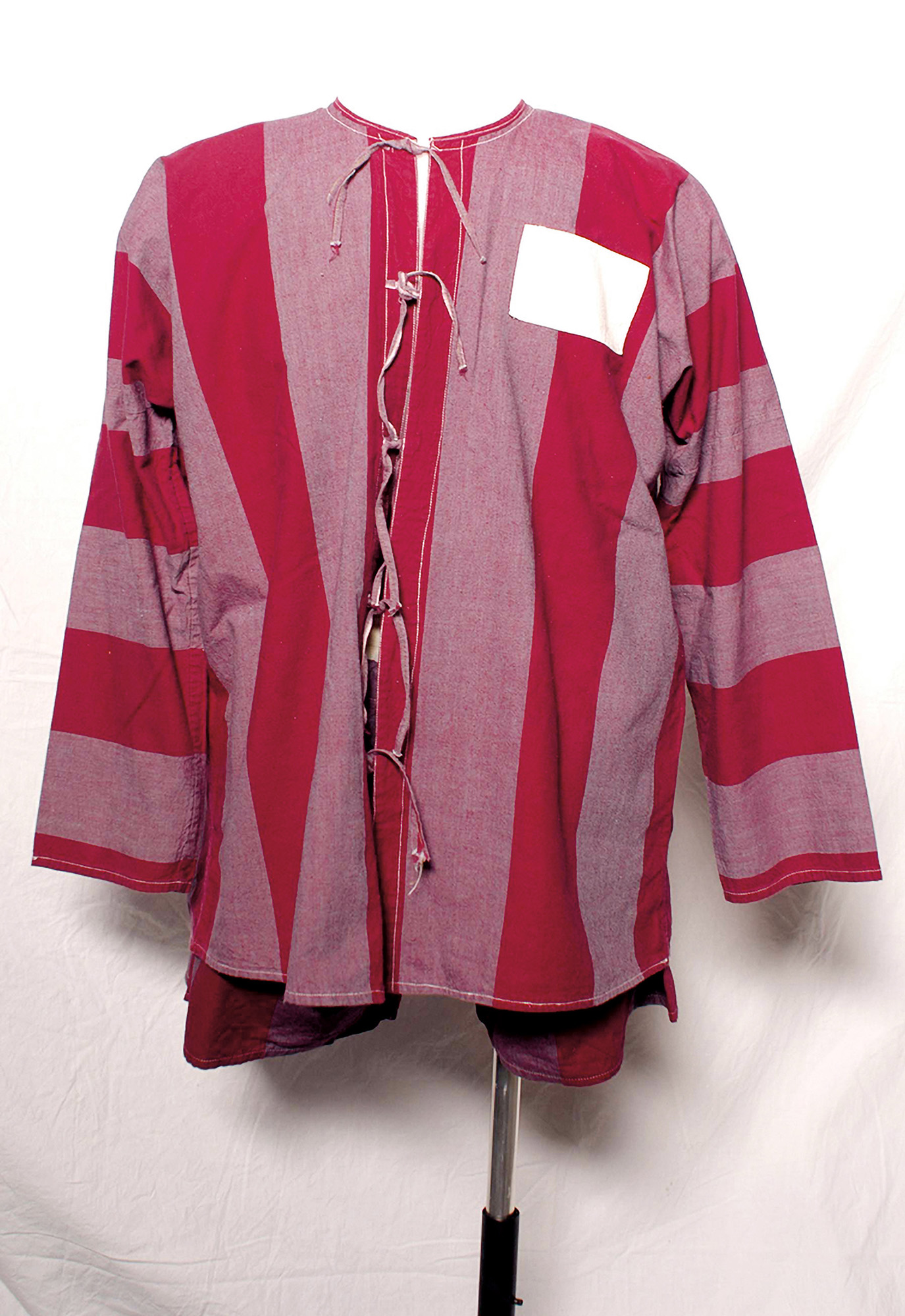
Next, the museum will be placing their General Atomics MQ-1L Predator drone on display in the new Modern Military Aviation gallery. Just as the Huey became a symbol to the American public of the Vietnam War, the Predator drone became a symbol for the Global War on Terror during the 2000s and the 2010s. The Smithsonian’s Predator is among the most historically significant of the type to have flown. Originally constructed as RQ-1L c/n R-034, this drone was given the USAF serial number 97-3034, and on January 23, 2001, it was this airframe that was used in the first static launch of a Hellfire air-to-ground missile from a Predator drone.
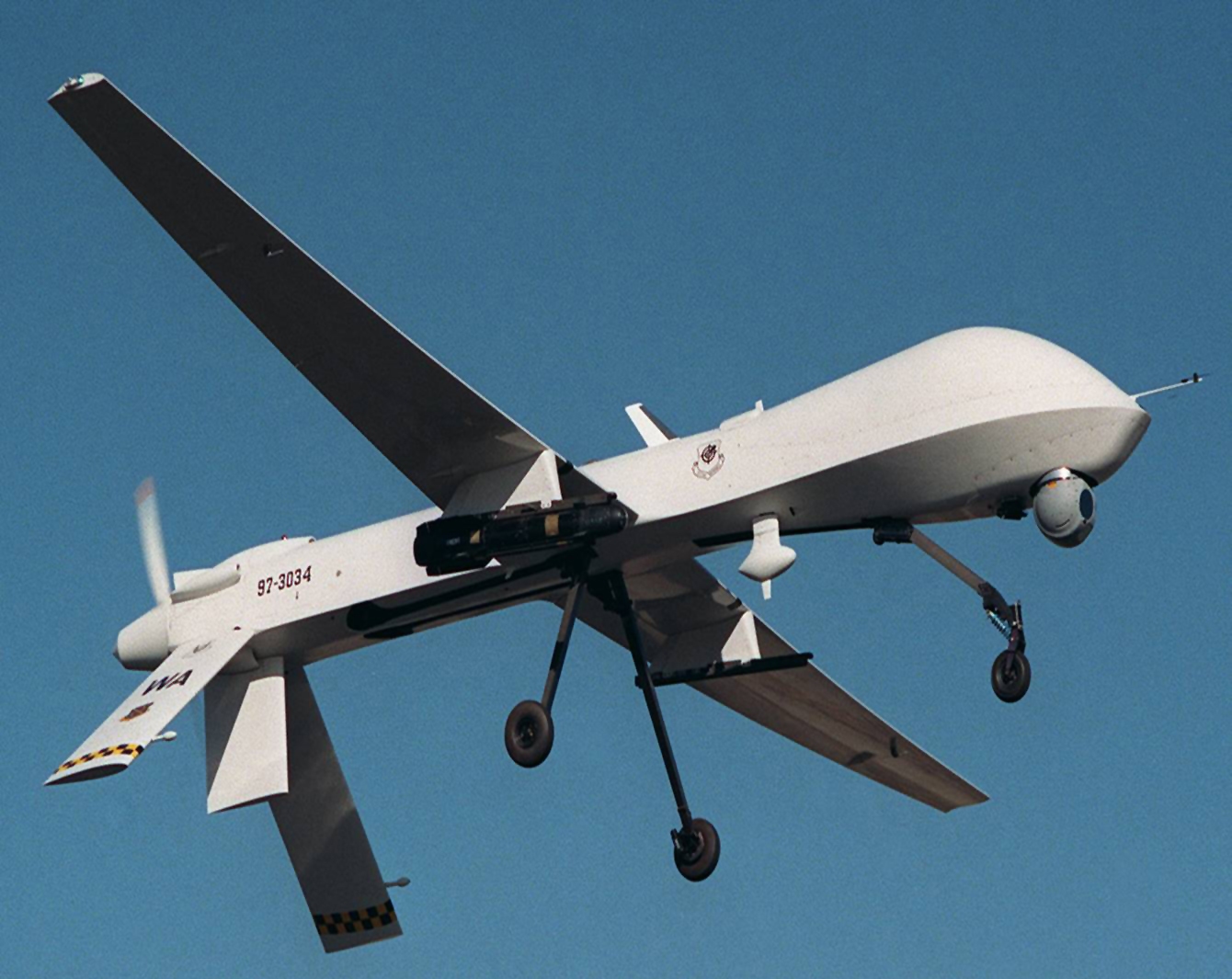
The following month, it was employed in the first airborne trials of the Hellfire-armed Predator, and two months later, in April 2001, it was fitted with nose-mounted sensors and laser targeting systems. Following the September 11th attacks, 97-3034 was deployed to Uzbekistan, which had authorized the US to establish bases for unarmed Predators to conduct reconnaissance into Afghanistan to identify leading figures of the terrorist group al-Qaeda who were then under the protection of the Taliban in Afghanistan. However, because of the need to obtain permission from Uzbekistan to allow the Predators to be armed, the US did not launch drone attacks into Afghanistan until after the September 11th attacks on New York and Waashington, D.C.
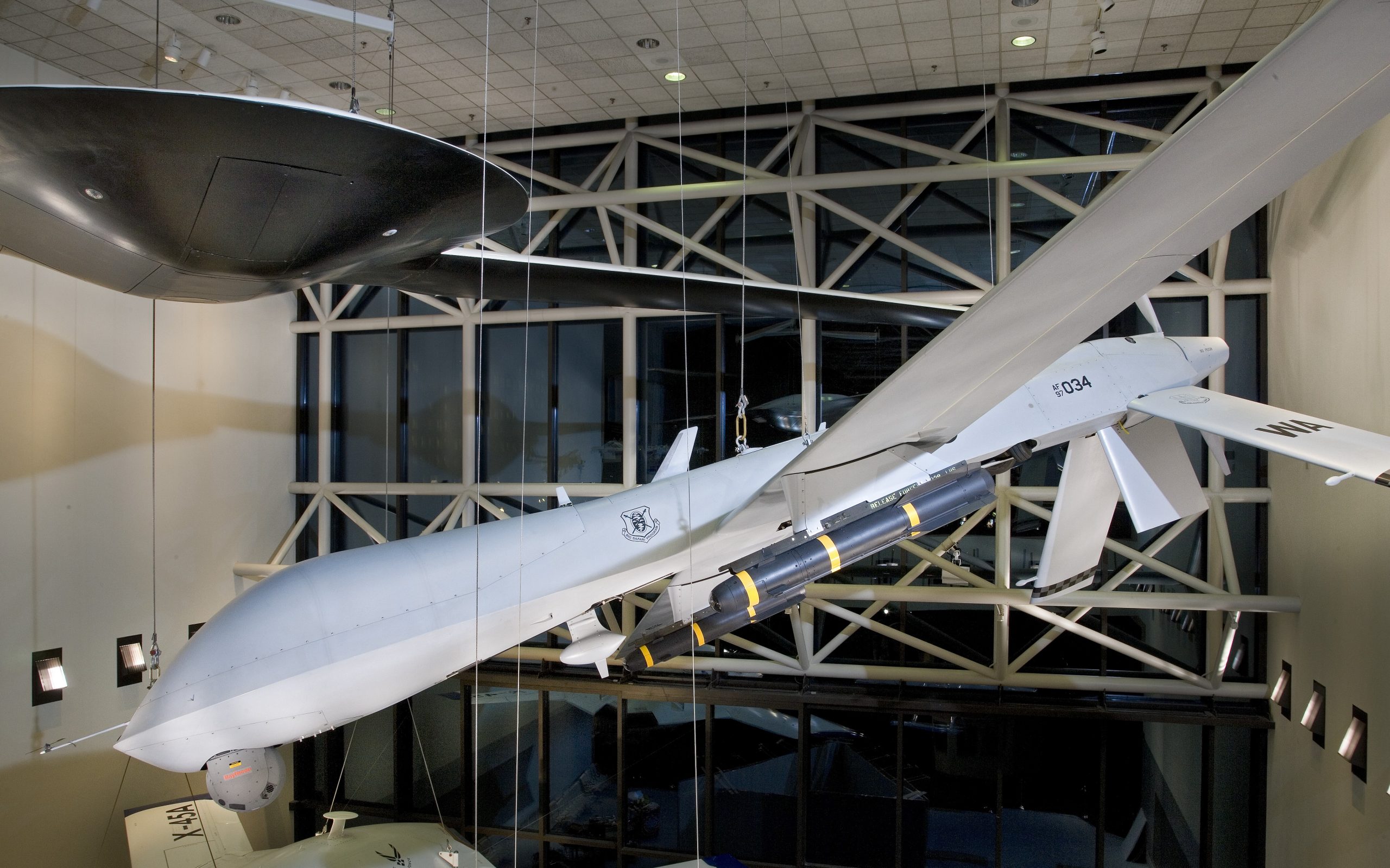
On October 7, 2001, Uzbekistan granted permission for the US to arm the Predators and on that very same day, Predator 97-3034 flew the first armed mission over Afghanistan, flying at night with two Hellfires over Kandahar. During this sortie, 97-3034’s surveillance equipment identified the convoy transporting Mullah Muhammad Omar, the Amir of Afghanistan. Despite being in a firing position, US Central Command delayed authorization to fire a missile at Omar, who then entered a building where it was feared that civilians may be killed. In an effort to flush out Omar, Predator 97-3034 launched a Hellfire and destroyed a Taliban security vehicle in the convoy, marking the first time a Hellfire missile was launched from a Predator in combat, and while it did not mark the first use of an unmanned aerial vehicles (UAVs) in combat, it was the first time a precision-guided weapon was successfully fired from a UAV in combat.
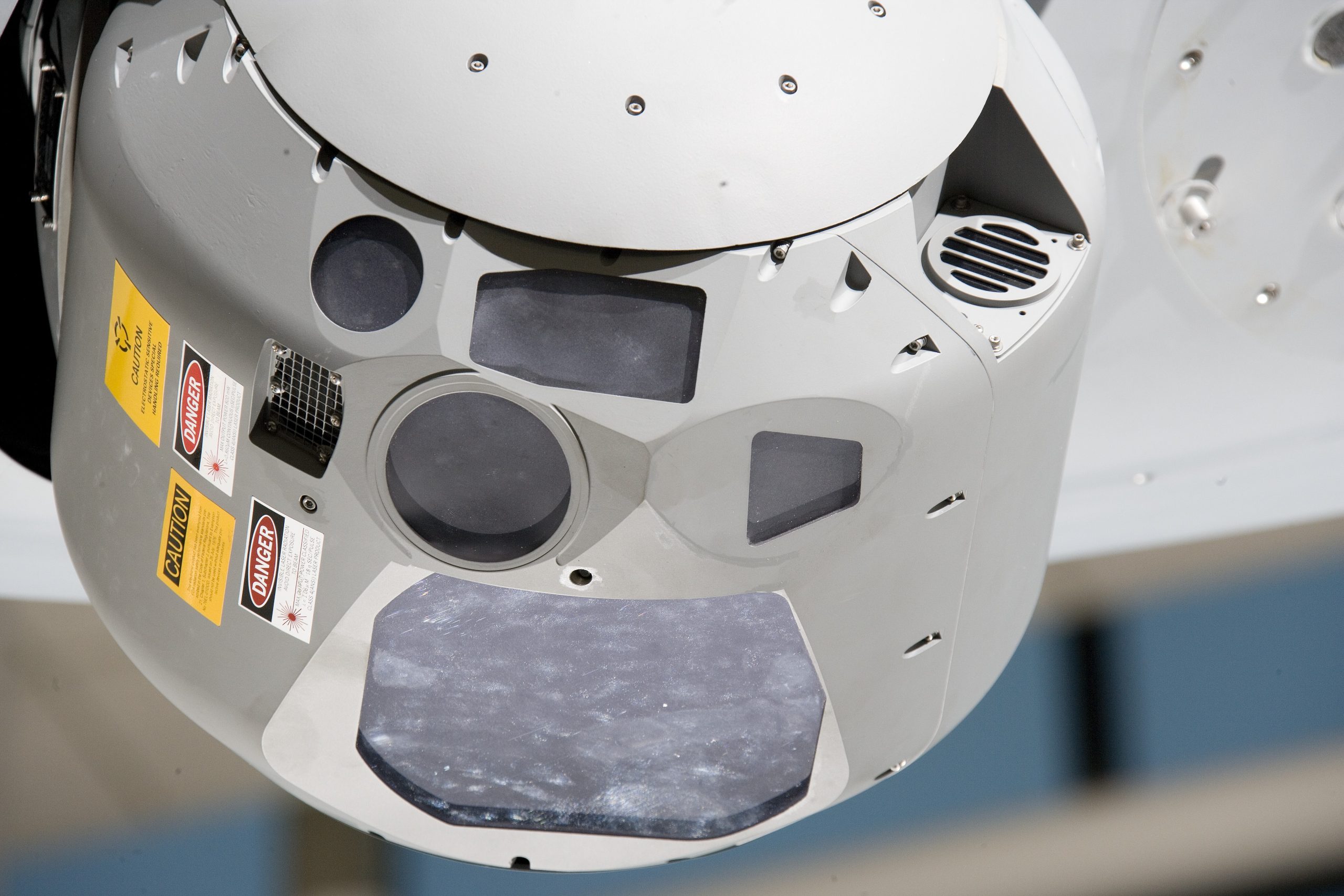
From September 2001 to January 2003, 97-3034 would fly 164 operational sorties over Afghanistan, being guided remotely by USAF operators around the globe, with missions lasting an average length of 14 hours, with longer missions enduring for over 24 hours. Because of 97-3034’s individual role in the history Remotely Piloted Aircraft Systems (PRAS), it was donated to the National Air and Space Museum by the US Air Force in 2004, where it was displayed in the former Military Unmanned Aerial Vehicles exhibit at the National Mall location, and was later displayed at the Udvar-Hazy Center after the ongoing renovations on the National Mall location had started. The MQ-1L Predator will be displayed in the new gallery alongside a replica of a drone ground control station to illustrate the perspective of the remote operators who guide military UAVs on missions around the world.
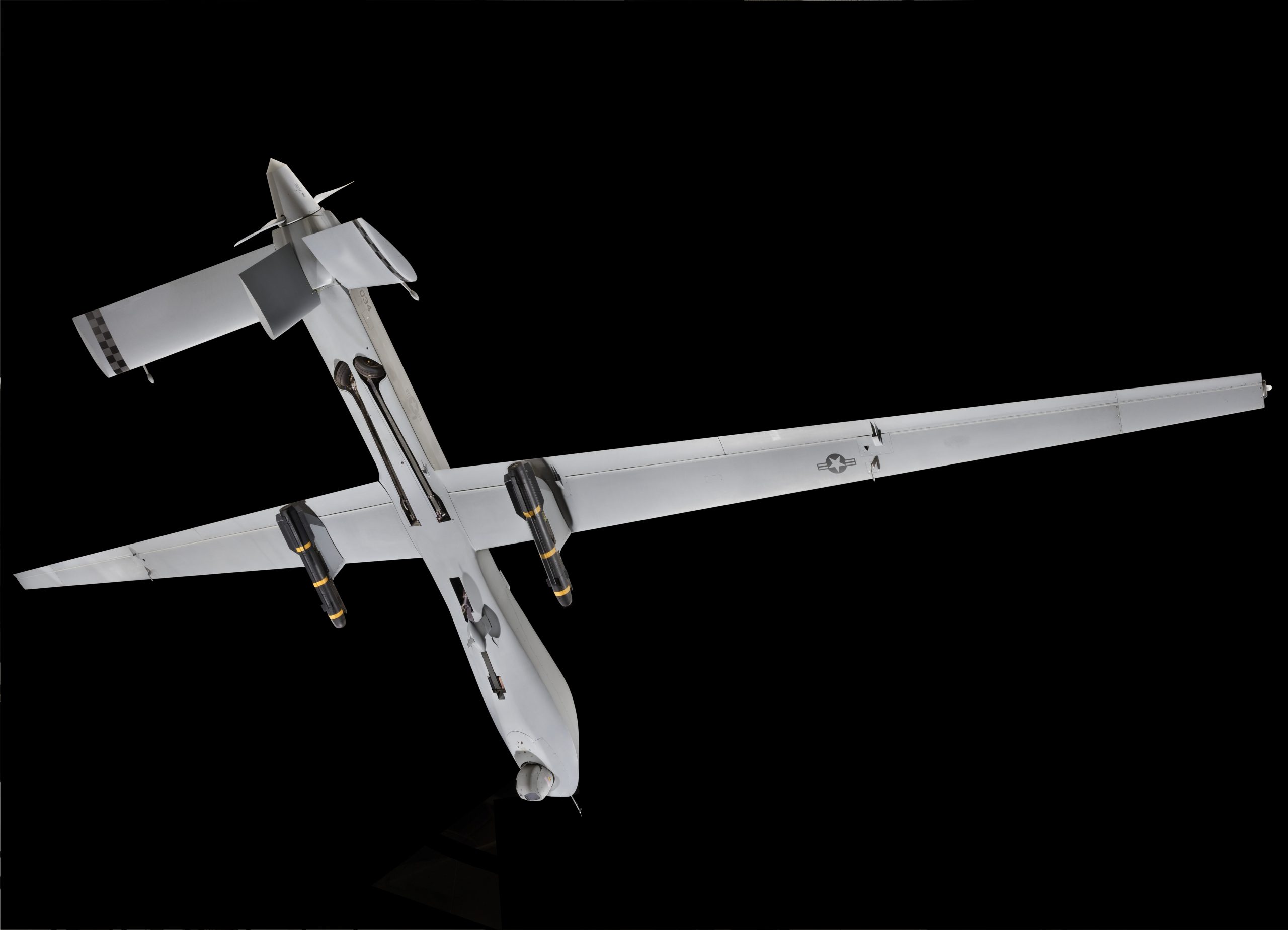
The last aircraft (or rather portion of an aircraft) confirmed to be on display in the new Modern Military Aviation is the nose section of a McDonnell Douglas F/A-18C Hornet. The Smithsonian already has a complete Hornet, which flew with the Blue Angels demonstration team, on display at the Udvar-Hazy Center (we covered that aircraft’s arrival back in 2020 HERE). In contrast to other aircraft on display in the Smithsonian, the nose section of this Hornet will be available for visitors to touch and to see the cockpit of a modern strike fighter.
Besides these aircraft, the new exhibit will feature other aspects of the museum’s collection pertaining to the subject of this gallery. Among these are a 1:100 scale model of the first nuclear-powered aircraft carrier, USS Enterprise (CVN-65), a Hycon 73B aerial camera of the type used in the Lockheed U-2 strategic reconnaissance aircraft, munitions such as an AIM-9 Sidewinder air-to-air missile (AAM), AIM-54 Phoenix AAM, and a GAU-8 “Avenger” 30mm cannon used in the Fairchild-Republic A-10 Thunderbolt II Warthog attack aircraft.
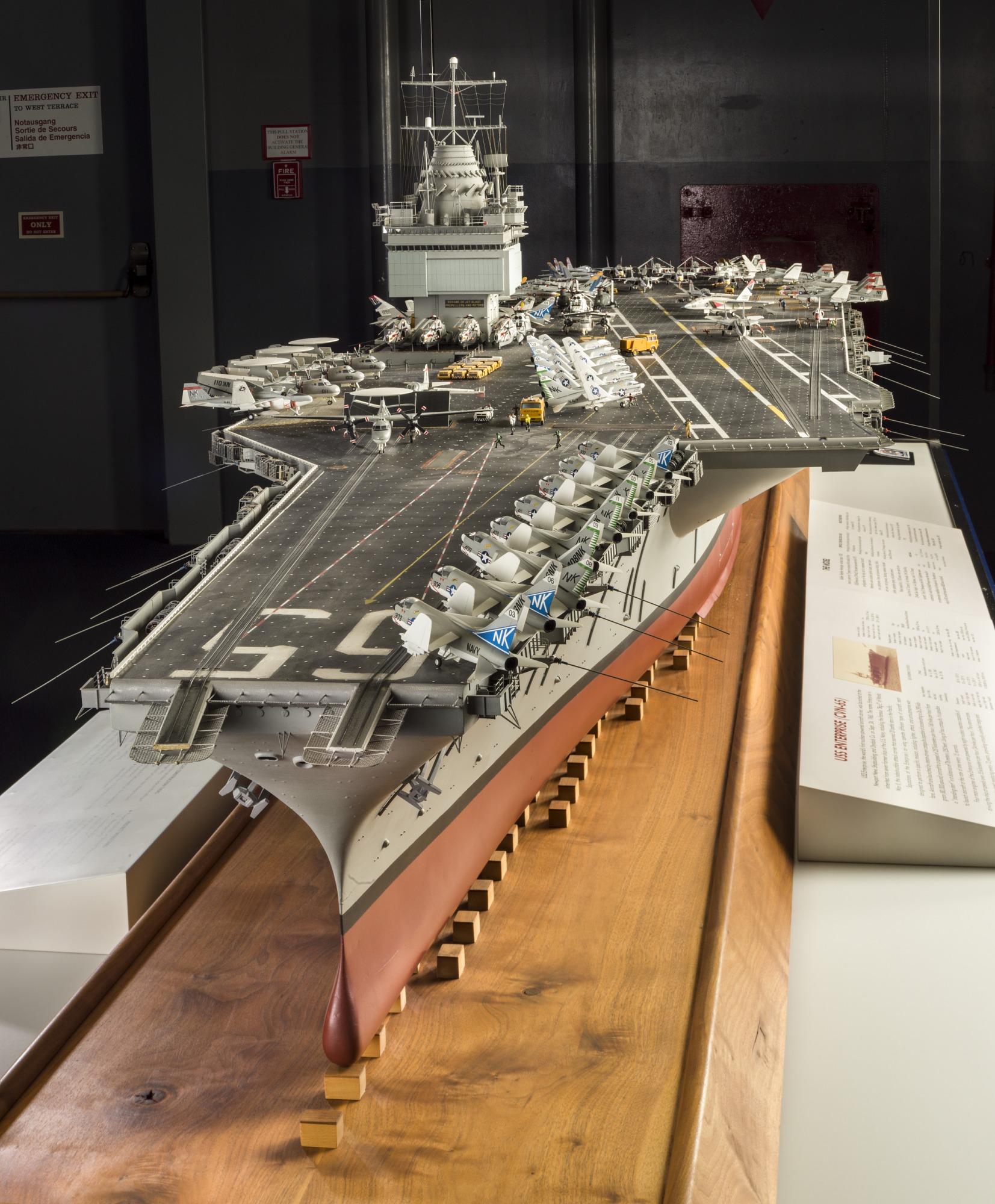
The gallery will also highlight the contributions of women in combat aviation, such as Colonel Kim “Killer Chick” Campbell, who earned the Distinguished Flying Cross for bringing her A-10 Warthog back from a combat mission after her aircraft’s hydraulic systems were disabled by heavy groundfire over Baghdad, Iraq on April 7, 2003, forcing her to return to base using the A-10’s manual-reversion mode. The gallery will feature Campbell’s flight gear that she wore on that mission, and a battle-scarred piece of the tail of her A-10.
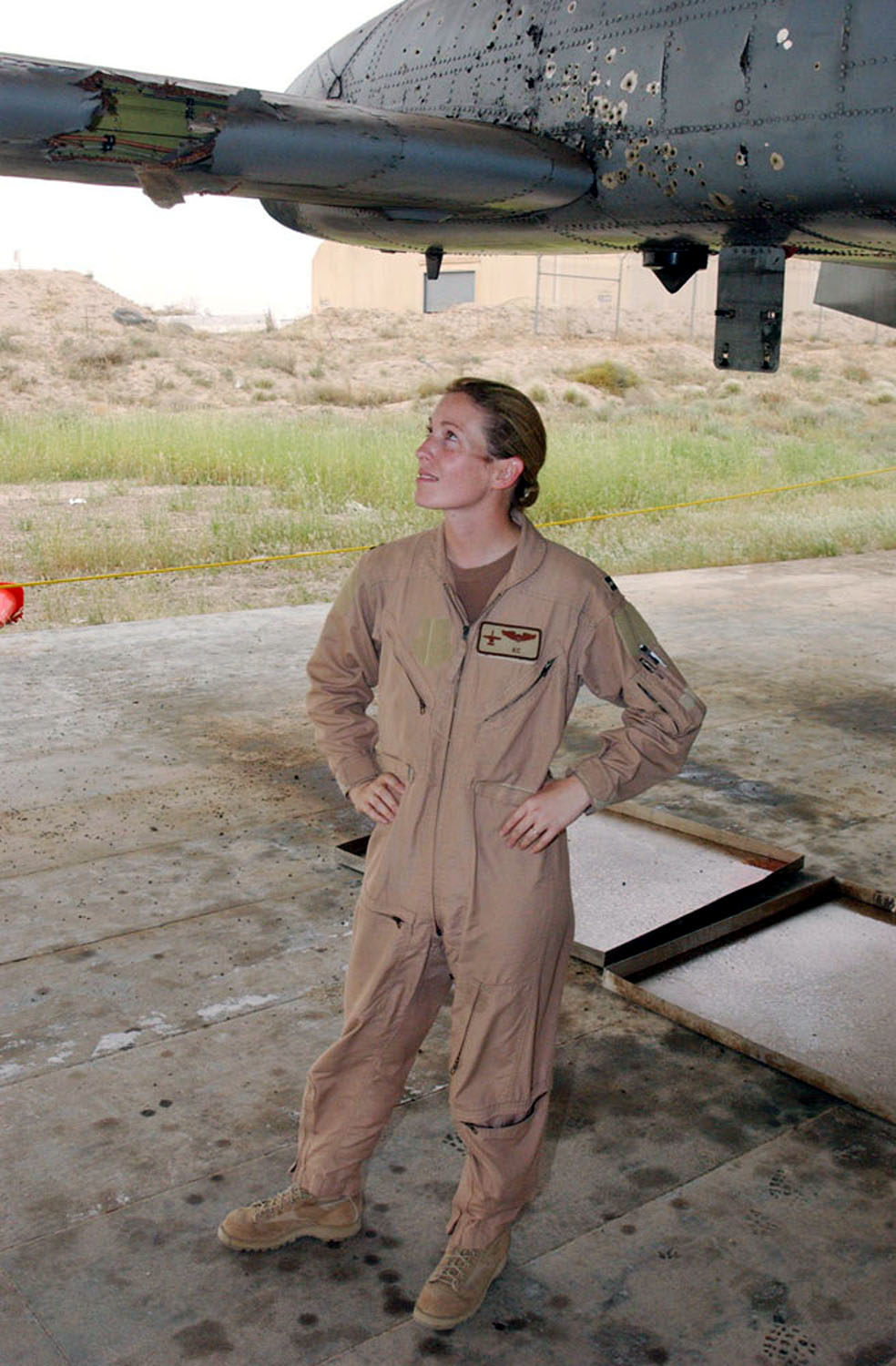
Another aspect of military aviation to be covered in the new gallery will also be the role of humanitarian airlift missions, from evacuating refugees and supplying scientific research missions, to operations such as the Berlin Airlift, with attention given to the late Gail Halverson, the “Candy Bomber”, who dropped candy from mini parachutes to bolster the morale of the children of West Berlin in the face of the Soviet blockade.
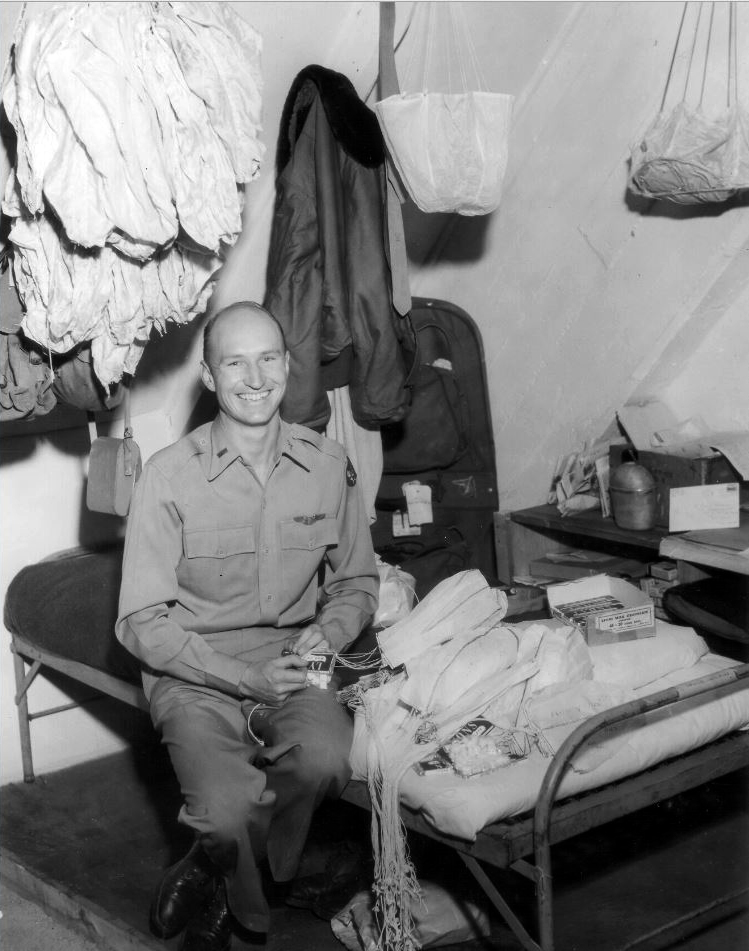
All of these and more will be installed in the new gallery at the National Air and Space Museum, which expects the new Modern Military Aviation to be opened alongside other new galleries in 2026. Additionally, the museum will maintain the existing Modern Military Aviation section at the Steven F. Udvar-Hazy Center. For more information, visit the National Air and Space Museum’s website HERE
